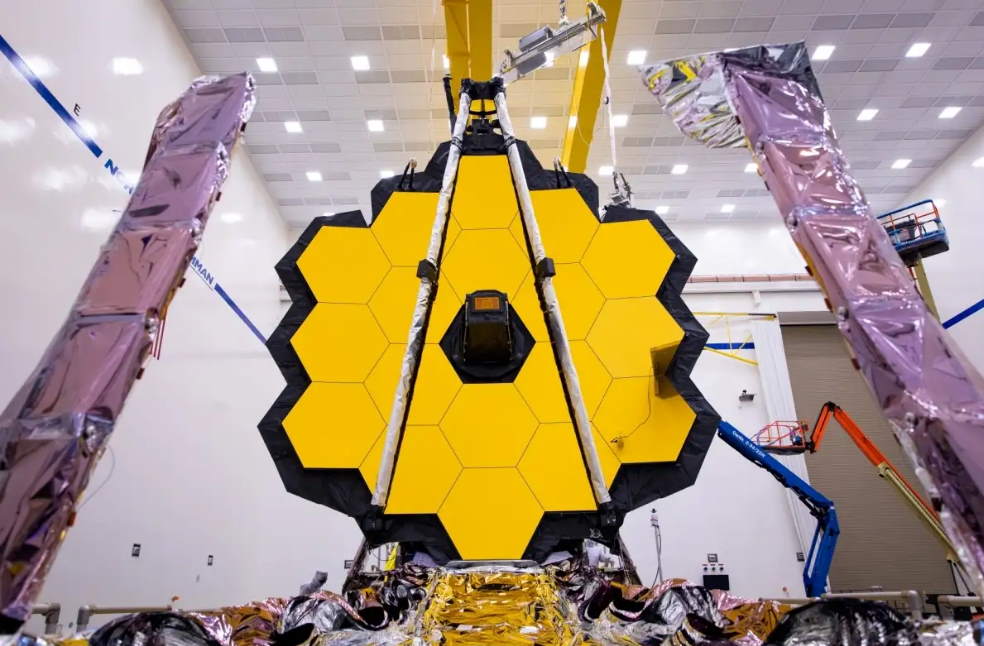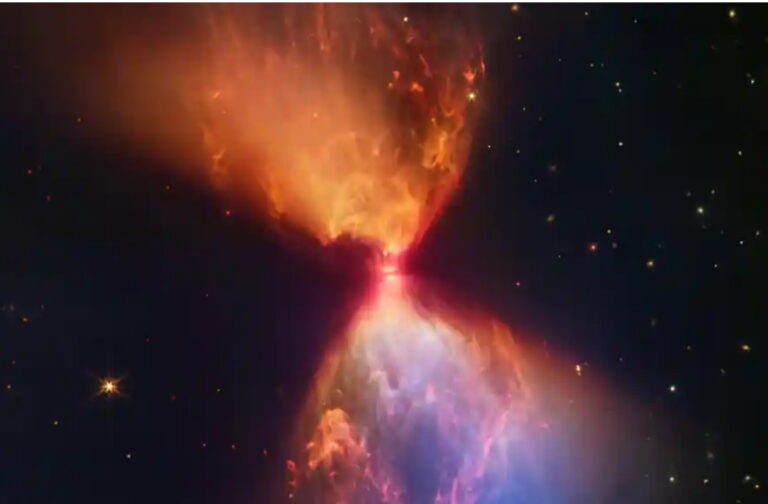NASA, Washington D.C: The most interesting picture ever taken by NASA’s James Webb Space Telescope depicts the cosmic commotion brought on by a very young star.
A dark, hourglass-shaped cloud of gas and dust surrounds the protostar that the image is centered on, hiding it from view in its neck. A protoplanetary disc, or black band running along the middle of the neck, is a collection of dense gas and dust roughly the size of our solar system and may one day give rise to a planet. A news release stated that the protostar’s light extends over and below this disc.
Countdown to a new star ⏳
Hidden in the neck of this “hourglass” of light are the very beginnings of a new star — a protostar. The clouds of dust and gas within this region are only visible in infrared light, the wavelengths that Webb specializes in: https://t.co/DtazblATMW pic.twitter.com/aGEEBO9BB8
— NASA Webb Telescope (@NASAWebb) November 16, 2022
Before it can be considered a true star, it still has a long way to go. Our sun, roughly 4.6 billion years old, is a relatively old celestial body compared to the protostar, also known as L1527, and its cloud. According to NASA, the image taken by Webb’s Near-Infrared Camera (NIRCam) displays the protostar’s previously concealed features amid the black cloud L1527. It offers insight into the formation of a new star.
NASA stated that cavities are formed in the image’s blue and orange clouds when material shoots out from the protostar and collides with the surroundings. The blue regions are where the dust is thinnest. As the layer of dust grows, thicker, less blue light can escape, resulting in patches of orange.
The nebula’s rich colors can only be seen in infrared light picked up by Webb’s Near-Infrared Camera or NIRCam. Because infrared light is invisible to the human eye, Webb is essential for revealing the undiscovered features of the cosmos.

In its statement to the media, NASA revealed that, “Shocks and turbulence inhibit the formation of new stars, which would otherwise form throughout the cloud. As a result, the protostar dominates the space, taking much of the material for itself.”
The protostar does not yet produce its energy through the nuclear fusion of hydrogen, a necessary feature of stars. Its shape also needs to be more stable. It looks like a puffy ball of hot gas that has between 20 percent and 40 percent of the mass of our sun.
A multinational collaboration involving NASA, the European Space Agency, and the Canadian Space Agency created Webb, which started releasing fresh insights into the cosmos in July.



